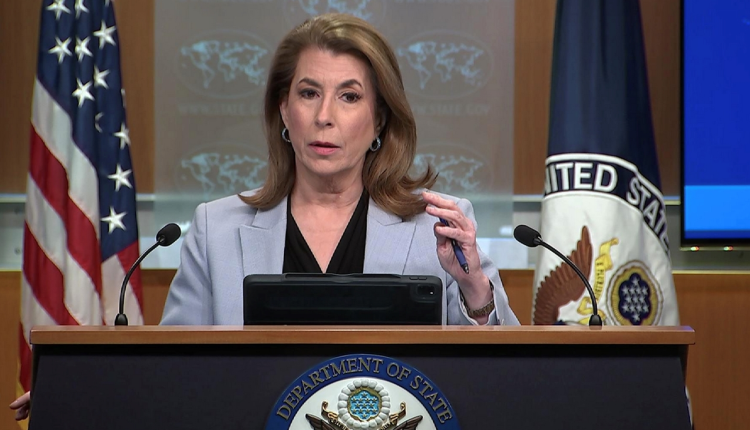U.S. Says Sanctions Relief for Syria to Proceed Gradually Despite Presidential Directive
By Kardo Roj
WASHINGTON, U.S. (North Press) – The U.S. State Department confirmed Thursday that the process of lifting sanctions on Syria, announced earlier this month by President Donald Trump, will take time due to the need for interagency coordination, despite growing regional concerns over political and humanitarian stability.
Tammy Bruce, spokesperson for the U.S. State Department, told reporters in Washington that while the president’s decision was clear, the actual implementation is complex. “The president has made it clear that it is time to lift sanctions,” Bruce said, noting that teams from the State and Treasury Departments are “working intensively” to move the process forward.
“The president holds broad authority, but implementing this decision requires licenses and approvals from several departments, especially the Treasury,” she added. Bruce emphasized that while the administration understands the urgency, procedural steps must be followed. “This is moving faster than typical in cases like these,” she noted.
On May 12, President Trump announced the lifting of sanctions during a visit to Riyadh, Saudi Arabia. The following day, he met with Syria’s transitional president, Ahmad al-Shara’, in a historic encounter—the first between the heads of the two countries in over two decades.
The easing of sanctions marks a major shift in U.S. policy after more than a decade of economic pressure on Syria. However, the move has sparked both anticipation and caution among international observers and humanitarian organizations, particularly given the fragile nature of Syria’s political transition.
Earlier this week, U.S. Secretary of State Marco Rubio warned of potential collapse within the transitional authorities in Damascus. Speaking on Tuesday, he said that without adequate support, Syria could “slide into large-scale civil war within weeks.”
Despite concerns, areas under the governance of the Autonomous Administration of North and East Syria (AANES) have largely remained stable. The region, secured by the Syrian Democratic Forces (SDF), has focused on rebuilding local institutions and providing essential services amid broader national uncertainty.
While the U.S. announcement has not yet altered the situation on the ground, especially in territories outside government control, local officials in northeast Syria have expressed hope that partial economic relief could eventually benefit communities struggling with inflation, fuel shortages, and limited access to reconstruction aid.
No official timeline has been provided for the full lifting of sanctions, but further developments are expected following high-level meetings in Washington in the coming weeks.

